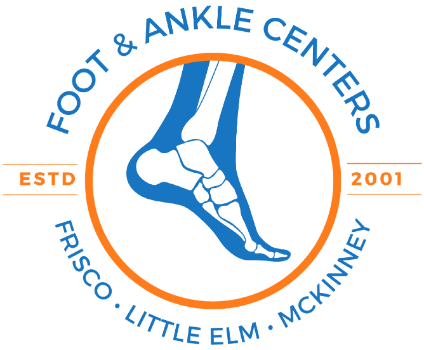What Conditions Can PRP Therapy Help Heal at Foot and Ankle Centers
Feb 7, 2025 | By: Foot & Ankle Centers of Frisco and Plano
What Conditions Can PRP Therapy Help Heal?
Platelet-Rich Plasma (PRP) therapy has gained widespread attention in the medical field for its ability to accelerate healing and reduce pain naturally. This cutting-edge treatment utilizes the body’s own healing mechanisms to repair damaged tissues, making it an excellent option for various foot and ankle conditions. At Foot & Ankle Centers, we offer PRP therapy to help patients find relief from chronic pain, injuries, and degenerative conditions.
If you’re experiencing persistent foot or ankle pain and are looking for a non-surgical, regenerative treatment, PRP therapy might be the solution. In this article, we’ll explore what PRP therapy is, how it works, and what conditions it can help heal.
What is PRP Therapy?
PRP therapy is a regenerative treatment that uses a patient’s own blood to promote healing. The process begins with a simple blood draw, after which the blood is placed in a centrifuge to separate its components. The resulting platelet-rich plasma contains a high concentration of growth factors that stimulate tissue repair, reduce inflammation, and accelerate recovery.
Once prepared, the PRP is injected into the injured or affected area. Since PRP comes from your own blood, the risk of allergic reactions or adverse side effects is minimal. The treatment is particularly beneficial for foot and ankle conditions, as these areas often experience slow healing due to limited blood supply.
Conditions PRP Therapy Can Help Treat
PRP therapy is effective for a wide range of conditions, including sports injuries, degenerative diseases, and chronic pain. Below are some of the most common foot and ankle conditions that can benefit from PRP treatment:
1. Plantar Fasciitis
Plantar fasciitis is one of the most common causes of heel pain, often resulting from overuse, excessive strain, or improper footwear. The condition occurs when the plantar fascia, a thick band of tissue connecting the heel to the toes, becomes inflamed. PRP therapy helps by:
- Reducing inflammation in the plantar fascia
- Promoting tissue repair and regeneration
- Providing long-term pain relief
Studies have shown that PRP injections can be more effective than steroid injections for plantar fasciitis, offering a safer and more natural alternative for pain relief.
2. Achilles Tendonitis and Tendon Tears
The Achilles tendon is crucial for walking, running, and jumping. However, repetitive stress or sudden injuries can cause inflammation (Achilles tendonitis) or small tears in the tendon. PRP therapy helps accelerate healing in the Achilles tendon by:
- Enhancing collagen production for tendon repair
- Reducing chronic inflammation and pain
- Strengthening the tendon to prevent future injuries
This makes PRP a great option for athletes and active individuals who want to heal quickly without resorting to surgery.
3. Ankle Sprains and Ligament Injuries
Ankle sprains are one of the most frequent injuries, particularly among athletes. When the ligaments supporting the ankle stretch or tear, it can lead to pain, swelling, and instability. PRP injections can help by:
- Speeding up ligament healing
- Reducing pain and swelling
- Restoring strength and stability in the ankle
For patients with chronic ankle instability, PRP therapy can help reinforce weakened ligaments and reduce the likelihood of future sprains.
4. Arthritis and Joint Pain
Osteoarthritis in the foot and ankle can lead to stiffness, pain, and reduced mobility. PRP therapy is a promising treatment for arthritis because it:
- Reduces joint inflammation
- Stimulates the production of new cartilage
- Improves overall joint function
Unlike traditional treatments such as pain medications or corticosteroid injections, PRP provides long-term benefits by addressing the underlying cause of arthritis rather than just masking the symptoms.
5. Neuromas (Morton’s Neuroma)
Morton’s neuroma is a painful condition caused by the thickening of nerve tissue between the toes. It often leads to sharp pain, burning sensations, or numbness in the forefoot. PRP injections can help by:
- Reducing inflammation around the affected nerve
- Promoting tissue repair
- Alleviating nerve pain without the need for surgery
For patients who have not found relief with orthotics or other conservative treatments, PRP may be an effective alternative.
6. Stress Fractures
Stress fractures are small cracks in the bone that develop from repetitive impact. They are common in runners, athletes, and individuals with weakened bones. Because bones have a slower healing process, PRP therapy can:
- Speed up bone healing
- Reduce pain and inflammation
- Strengthen the affected area to prevent future fractures
For patients looking to recover quickly from a stress fracture, PRP therapy can be a valuable addition to traditional treatment methods.
7. Diabetic Foot Ulcers
For individuals with diabetes, foot ulcers are a serious concern. These open wounds heal slowly due to poor circulation, increasing the risk of infection and complications. PRP therapy can:
- Stimulate new tissue growth
- Improve wound healing
- Reduce the risk of infections
Because PRP is a natural treatment, it is particularly beneficial for diabetic patients who need safe and effective solutions for chronic wounds.
What to Expect from PRP Therapy
The PRP procedure is relatively quick and minimally invasive. Patients typically undergo:
- Blood Draw – A small amount of blood is drawn from the patient’s arm.
- PRP Preparation – The blood is spun in a centrifuge to concentrate the platelets.
- Injection – The PRP is injected directly into the affected area under ultrasound guidance for precision.
Most patients experience minimal downtime after PRP therapy. While some may notice immediate improvements, the full effects typically develop over a few weeks as the body undergoes natural healing. Depending on the severity of the condition, multiple PRP injections may be recommended for optimal results.


0 Comments